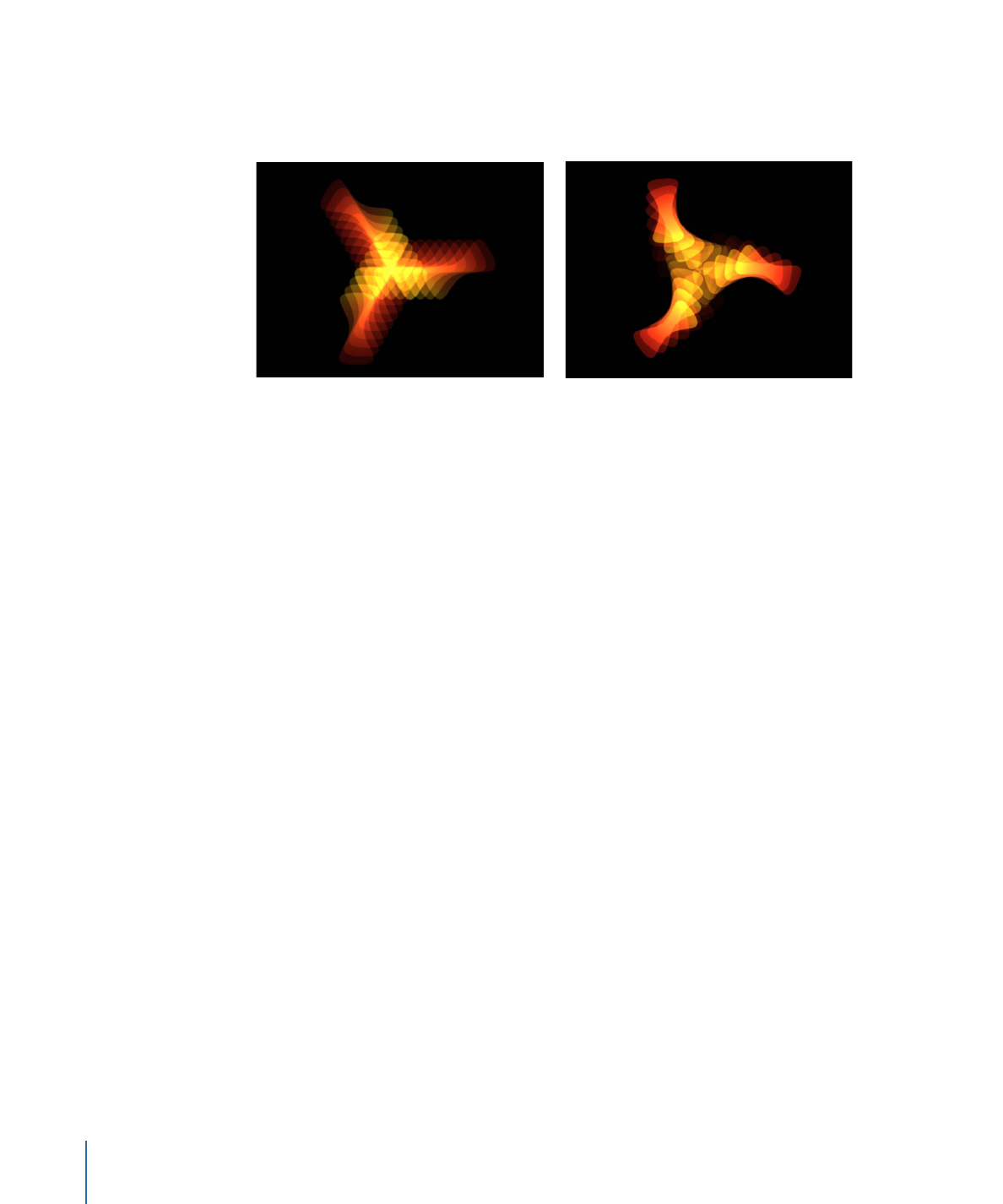
Sequence Replicator Controls
Use the following parameters to modify the sequence animation. Except for the Add and
Remove Parameter pop-up menus, these parameters also appear in the Sequence
Replicator HUD.
Parameter:
Use the Add and Remove pop-up menus in the Parameter row to add and
remove replicator cell parameters. When you choose an item from the pop-up menu,
additional controls appear in the Behaviors Inspector above the Parameter row. You can
adjust these controls (or keyframe them) to modify the sequence animation, which is
based on the change in value between these parameters and the original values of the
cells. The Add pop-up menu items include:
• Rotation: Adds a rotation dial and value slider that enables you to Specify (in degrees)
the rotation of replicator elements.
• Color: Adds a row of color controls that let you specify a tint for replicator elements.
You can click the color well to choose a color or open the disclosure triangle and use
the Red, Green, and Blue sliders.
792
Chapter 15
Using the Replicator
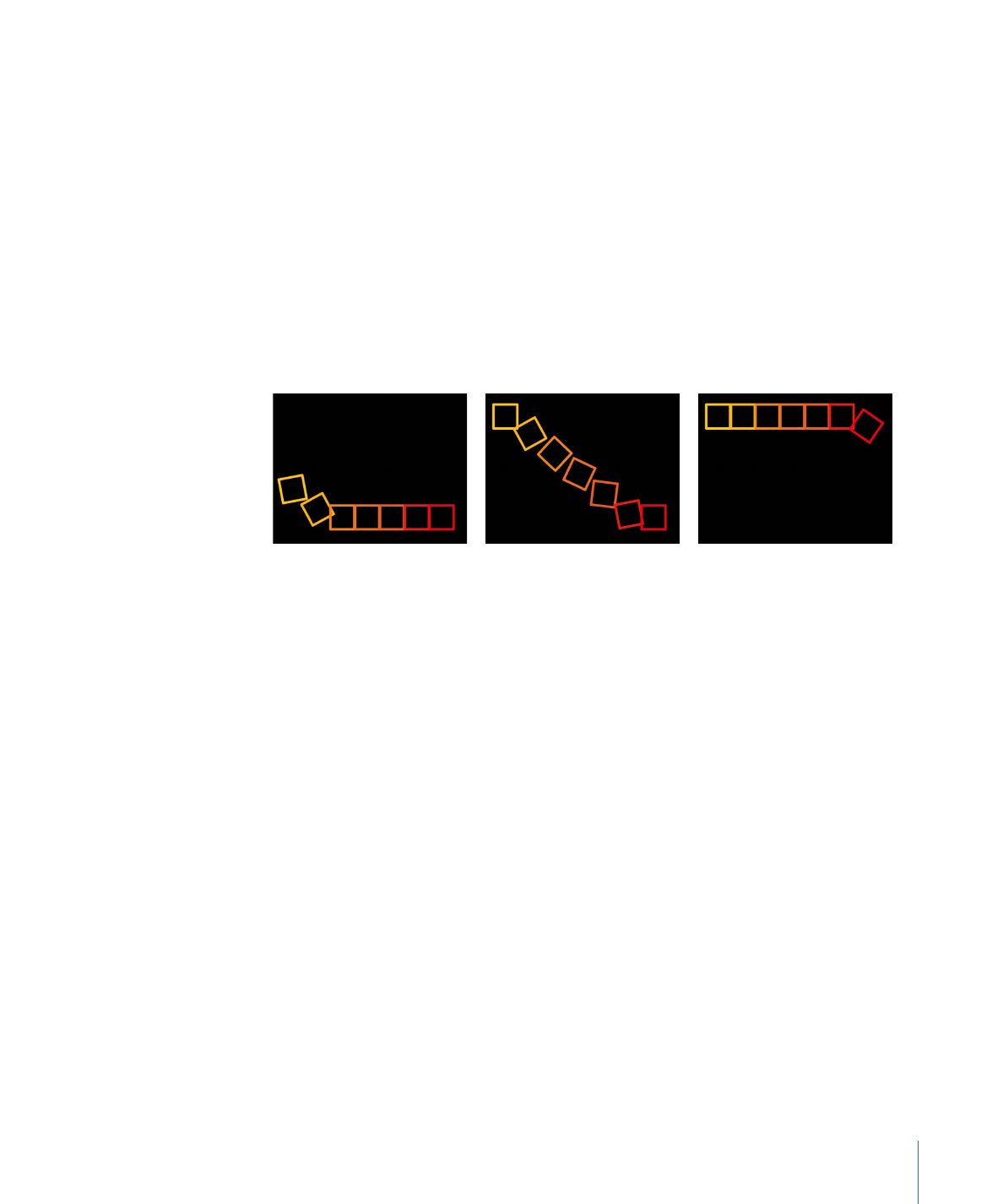
• Opacity: Adds an opacity slider, allowing you to define the transparency of the pattern
elements.
• Scale: Adds a scale slider that lets you define the size of replicator elements. Click the
disclosure triangle next to the Scale slider to reveal separate X scaling and Y scaling
subparameters that can be used to adjust the width and height of the cells separately.
By default, Scale is set to 100%—the size of the replicator cells is equal to the original
size defined in the cell parameters.
• Position: Adds two value fields that define the offset of elements from their original
position in X and Y space. Click the disclosure triangle next to the parameter name to
reveal separate X, Y, and Z position subparameters. For example, to create an animation
in which elements move upward in Y over the replicator pattern, enter a positive value
in the Y Position field. In the following images, Y Position is set to 300.
Sequencing:
This pop-up menu specifies how the sequence animation moves through
the elements of the pattern, based on the change from the original parameter value to
the value set in the Sequence Replicator parameters. The starting point for the sequence
animation is based on the selected Origin or Build Style parameters (in the Replicator
Inspector). For example, if a line replicator’s Origin parameter is set to End Point, the
sequence animation begins at the end of the line and moves toward the start of the line
by default. To change the starting point for the sequence animation, change the Origin
or Build Style of the pattern in the replicator controls (in the Replicator Inspector or HUD).
The Sequencing options are:
• To: Specifies that the animation begins at the original value of the cells and moves to
the value set in the Sequence Replicator behavior for that parameter. For example, if
the original opacity value of a cell is 100%, and opacity is set to 0% in the Sequence
Replicator parameters, onscreen elements begin completely opaque and become
completely transparent.
• From: Specifies that the animation moves from the value set in the Sequence Replicator
behavior to the original value of the cells. For example, if the original opacity value of
a cell is 100% and opacity is set to 0% in the Sequence Replicator parameters, onscreen
elements begin completely transparent and become completely opaque. This is the
opposite of the To option in the Sequencing pop-up menu.
793
Chapter 15
Using the Replicator
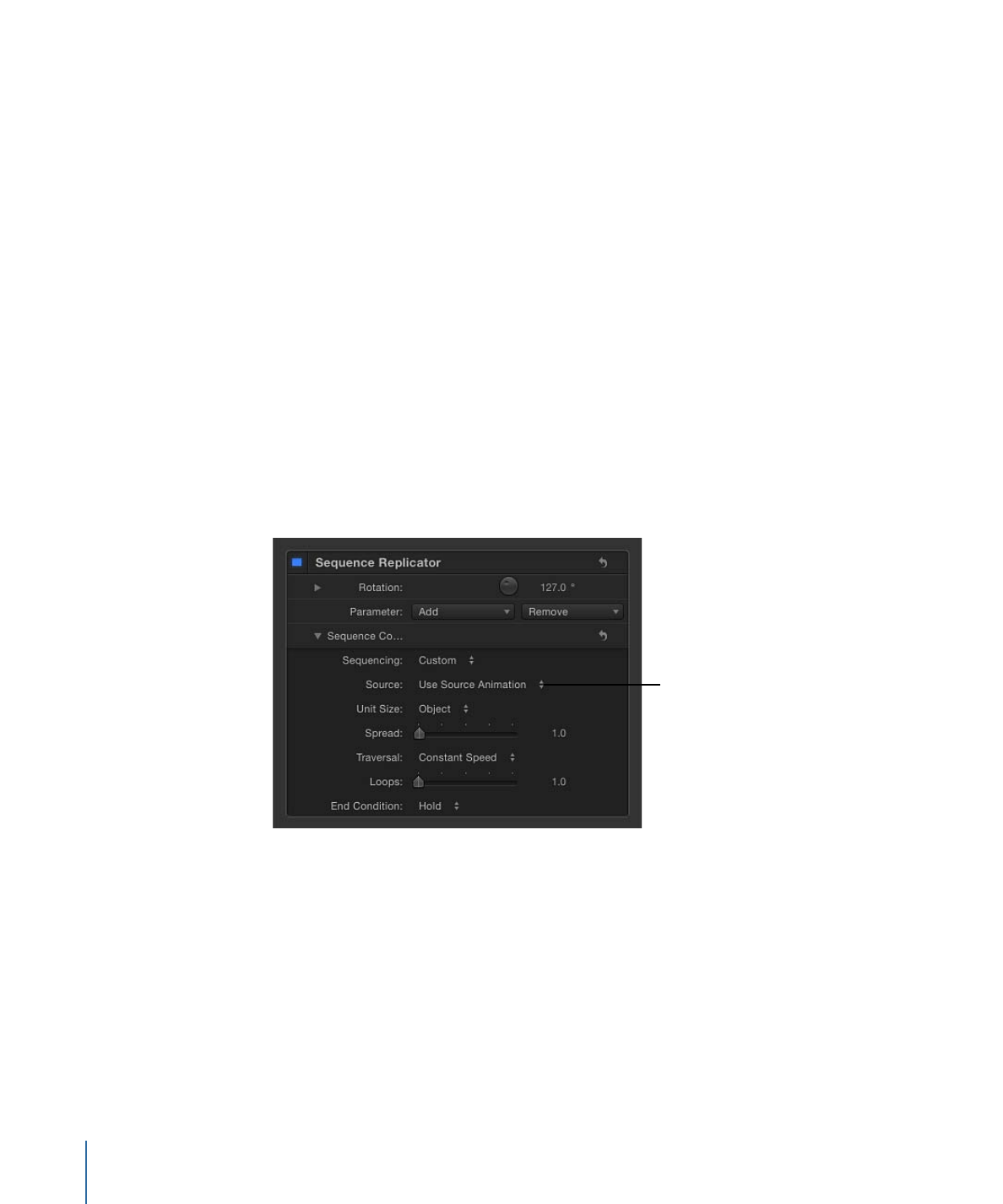
• Through: Specifies that the sequence goes through a full animation cycle starting at
the original value of the cells, moves to the value set in the Sequence Replicator, and
then returns to the original value of the cells. For example, if the original opacity value
of a cell is 100% and opacity is set to 0% in the Sequence Replicator parameters,
onscreen elements begin completely opaque, become transparent, and then become
completely opaque again.
• Through Inverted: Specifies that the sequence goes through an inverted animation
cycle starting from the value set in the Sequence Replicator, moves to the original value
of the cells, and then returns to the value set in the Sequence Replicator. For example,
if the original opacity value of a cell is 100% and opacity is set to 0% in the Sequence
Replicator parameters, the onscreen elements begin completely transparent, become
opaque, and then become completely transparent. This is the opposite of the Through
Sequencing option.
• Custom: Allows you to use animation originally created in the source layer’s parameters
(except alpha parameters) or to keyframe how the animation moves through the values
set in the Sequence Replicator parameters over an element. Each element undergoes
the same value sequence. When Custom is chosen from the Sequencing pop-up menu,
the Source parameter becomes available.
Source parameter becomes
available when Sequencing
is set to Custom.
Source:
This pop-up menu becomes available when Custom is chosen from the
Sequencing pop-up menu. The Source options are:
• Use Source Animation: If the source layer parameters are keyframed (in the Replicator
Inspector or HUD), choose this option to enable the animation created by those
keyframes.
• Ignore Source Animation: If the source layer parameters are keyframed (in the Replicator
Inspector or HUD), choose this option to ignore the animation created by those
keyframes.
794
Chapter 15
Using the Replicator
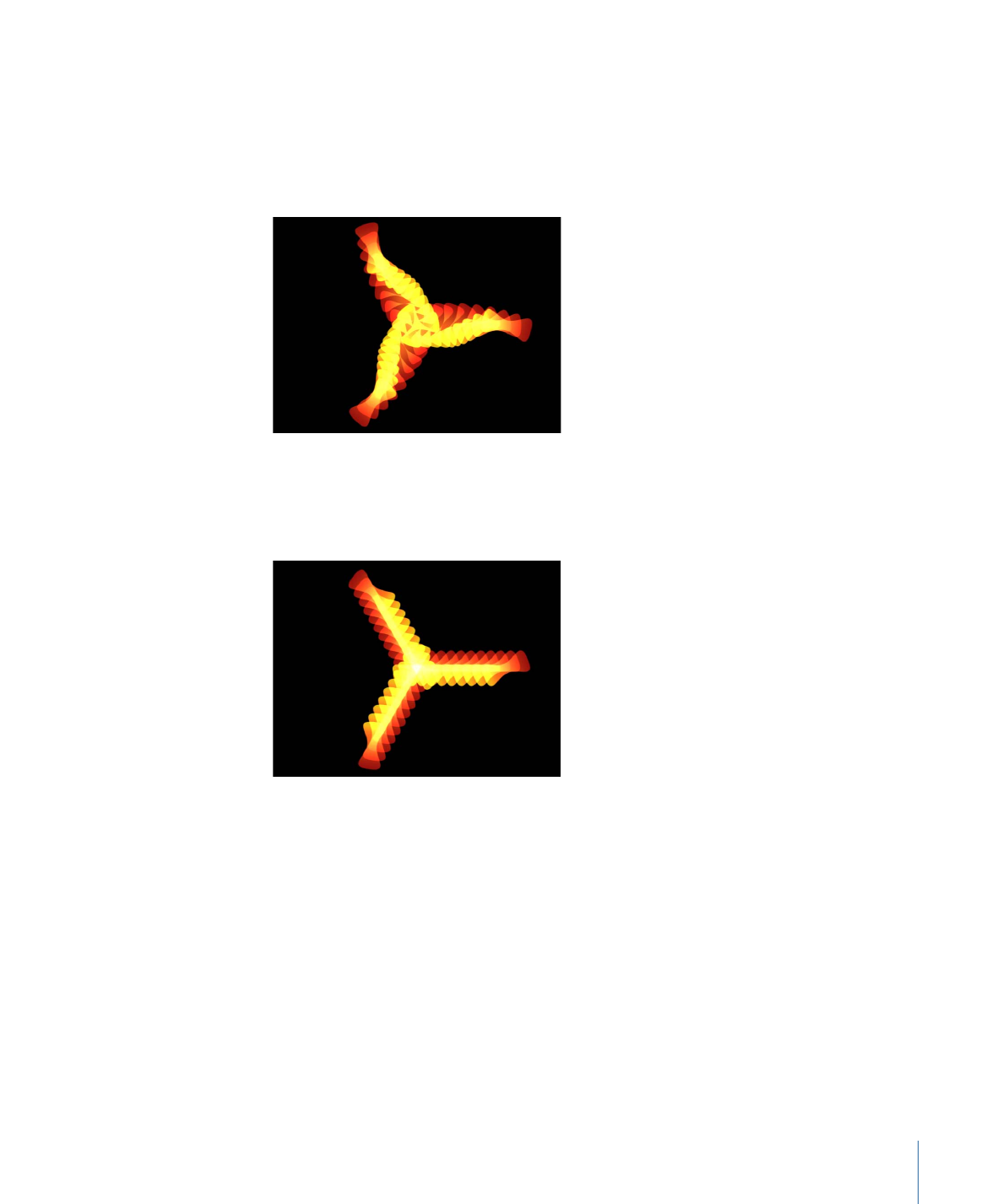
Unit Size:
This pop-up menu specifies whether the sequence animation is applied to the
replicator pattern as a whole, to its elements, or to a keyframed range. The Unit Size
options are:
• Object: Applies the sequence animation over each element as its own entity. Object is
the default setting.
When Unit Size is set to Object, each replicator
pattern cell is affected individually.
• All: Applies the sequence animation to all replicator elements simultaneously.
When Unit Size is set to All, every replicator
pattern cell is affected simultaneously.
795
Chapter 15
Using the Replicator
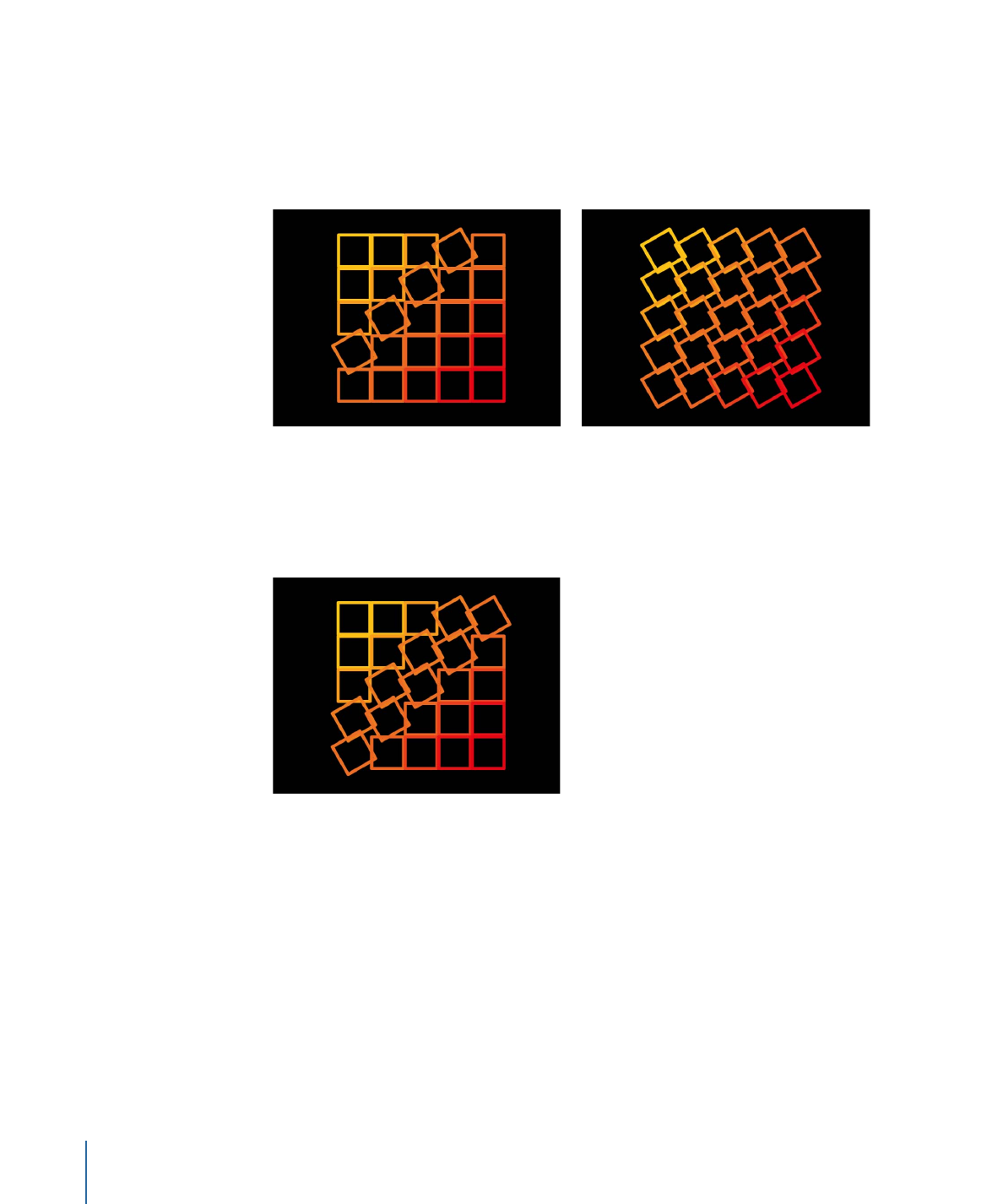
• Custom: Allows you to specify the percentage of elements in the pattern that are
affected by the sequence animation at once. Although you can create keyframes for
the Custom option, it is not required to affect the sequence. As shown in the following
images, the Object and All options allow you to sequence the animation only through
the origin or build style of the pattern, or through all pattern elements simultaneously.
Unit Size set to All sequences the animation
over all cells simultaneously.
Unit Size set to Object sequences the animation
over the build of the pattern.
Custom allows you to define an area of elements—based on percentage—that are
affected by the sequence.
Unit Size set to Custom allows you to define the
percentage of cells affected as the sequence
moves through the pattern.
When Custom is chosen from the Unit Size pop-up menu, the Start and End parameters
become available.
Start:
This slider, available when Custom is chosen from the Unit Size pop-up menu,
specifies the offset of the start of the range of elements affected by the sequence
animation as it moves over the replicator pattern. In the above image, Start is set to 10%.
796
Chapter 15
Using the Replicator

End:
This slider, available when Custom is chosen from the Unit Size pop-up menu,
specifies the end of the range of elements affected by the sequence animation as it moves
over the replicator pattern. By default, End is set to 10%. In the above image, End is set
to 30%.
Note: If the Sequencing pop-up menu is set to Custom, the Custom option in the Unit
Size parameter has no affect.
Spread:
This slider controls the amount of falloff of the animation. To create a softer
transition between each element, increase the Spread value.
Traversal:
This pop-up menu sets the action of the sequence behavior to one of the
following:
• Constant Speed: The sequence animation moves from the origin of the replicator pattern
through the end of the pattern at a constant speed. The sequence moves in the direction
specified in the replicator parameters, such as the origin or build style.
• Ease In: The sequence animation begins slowly and increases to normal speed as it
moves through the replicator pattern.
• Ease Out: The sequence animation begins at normal speed and slows toward the end
of the replicator pattern.
• Ease In/Out: The sequence animation begins slowly, increases to normal speed as it
moves toward the middle of the duration of the replicator pattern, and slows as it
reaches the end of the replicator pattern.
• Accelerate: The sequence animation increases in speed.
• Decelerate: The sequence animation decreases in speed.
• Custom: This option allows you to keyframe how the animation moves through the
replicator pattern. When Custom is selected from the Traversal pop-up menu, the
Location parameter replaces the Loops parameter.
• Location: This slider, available when Custom is chosen from the Traversal pop-up menu,
defines the location of the pattern where the animation is in effect.
For more information on using the Custom Traversal option, see
Using the Sequence
Replicator Custom Traversal Option
.
Loops:
This slider sets the number of times the animation sequences through the
replicator pattern over its duration.
Note: Loops is not available when the Traversal parameter is set to Custom.
End Condition:
A pop-up menu that sets how the sequence animation is repeated over
the duration of the replicator object. This parameter has no effect for Loop values less
than or equal to 1. End Condition options are:
• Hold: Completes the sequence animation cycle one time, then starts it again from the
beginning (after the last element in the sequence completes its animation).
797
Chapter 15
Using the Replicator
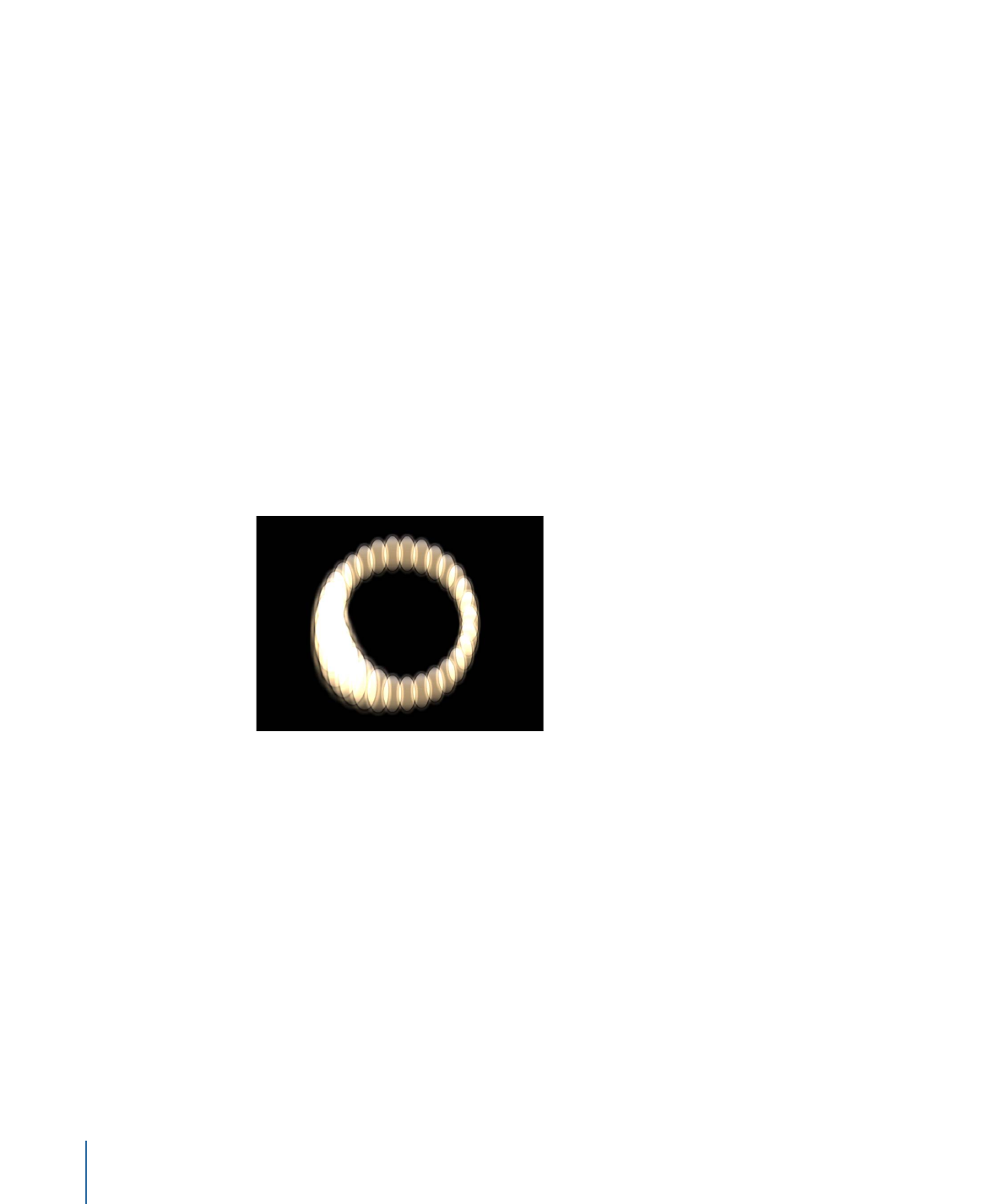
• Wrap: Treats the sequence animation as a continuous loop so the spread wraps from
the last element in the sequence to the first element.
• Ping Pong: Completes the sequence animation cycle forward, then completes the
animation backward, then forward, and so on.